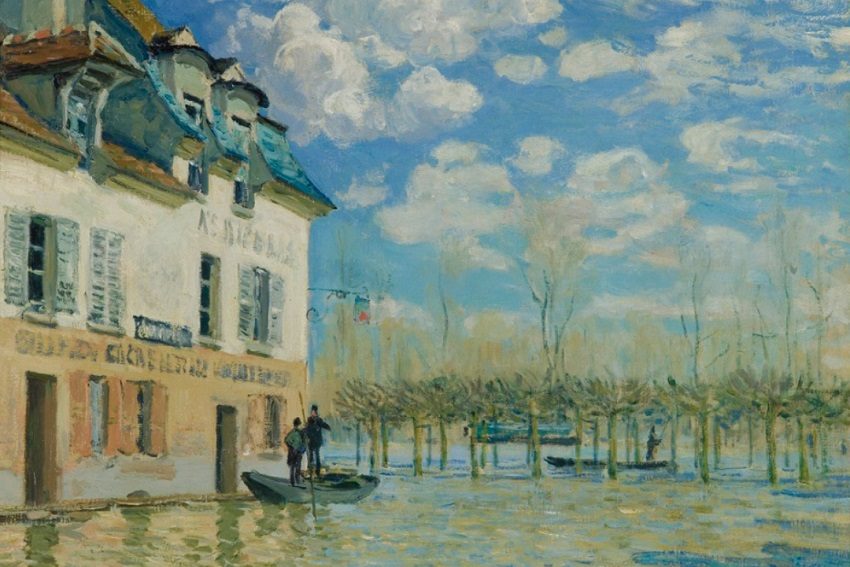Hungry eyes feast on the Colours of Impressionism

While the powers of colour and celebrity are strong in these Masterpieces from the Musée d’Orsay, the exhibition demands that we view the works individually, on their own terms, writes John Neylon.
In a celebrity-driven art world, a self portrait, channelling an early 20th century Australian artist (George Lambert) and a New Zealand Prime Minister (Jacinda Ardern) wins this year’s Archibald Prize.
Good luck to Yvette Coppersmith for catching the The Board of Trustees (AGNSW) collective eye but confusion in the ranks for progressive artists and viewing public who may have been led to think, as ex-Director AGNSW Edmund Capon once remarked, that contemporary portraiture was all about challenging rather than confirming its traditions.
However, it was some comfort to see that ‘common folk’, including lots of artist as selfies, have insinuated themselves into a line-up once the preserve of celebrity actors, sports stars, and eminent figures from industry, politics, science and so forth.
All of which leads to reflection on viewing the Colours of Impressionism, now into its third month at the Art Gallery of South Australia. It is definitely celebrity driven. The A-list line-up includes outstanding works by Monet, Cézanne, Manet, Morisot, Pissarro, Seurat, Sisley, normally accessed via an expensive pilgrimage to the Musée d’Orsay in Paris.
Here in Adelaide the celebrity razzle dazzle falls away. The hang in the Elder Wing is rigorous. These works look like they belong. Works are hung on the line rather than grouped and skied in studio style. This exhibition has been designed for the long view or the hard stare. The end result is an invitation to respond to each work on its own terms rather than be swept up in the usual sing-along chorus lines of ‘vibrant colours’, ‘communion with light’ and so on.

The fact that many artists today make paintings that superficially resemble (portraits, landscapes) those made in France 150 years ago should not underestimate the gulf that lies between them. Seductive as images of Seine-side idylls, rural haunts and beach picnics might be, the contexts in which these works came to be have stamped the imagery with a distinctive character.
Much of this is driven by colour, of course — something shared with generations of representational artists to the present day. In the mid to later nineteenth century, many colours were absolutely new (cobalt blue, cadmium yellow, oranges, viridian green, lake pigments and violets). We are witnessing in a number of paintings something akin to love at first sight. Some idea of how startling this new colour palette must have been for viewers is given by critical commentary of the period such as Paul de Chary describing ‘bright colours that spurt like sprays of fireworks… a luminous frenzy.’ Talk about purple prose. Infatuation, not only with new, bright colours but with the vibrancy of dots and marks of pure colour aligned defines works by Seurat, Signac, Luce, Pissarro, van Rysselberghe and others in this exhibition.

To observe how these Pointillist/ Divisionist/Neo-Impressionist artists deliberately counterposed complementary opposite colours within the same form is to appreciate how powerful the principles of simultaneous colour contrast were for these artists. This is particularly evident in Seurat’s small studies for his iconic painting, A Sunday on La Grande Jatte. Close up they are pumping with energy driven by excited exchanges between blue shadows and orange patches of light. Then step back to appreciate Seurat’s parallel agenda, of timeless form arranged with the gravitas of an Egyptian relief carving.
All of which leads to the other ‘long stare’ factor — drawing. In the mid-nineteenth century battle lines were drawn between colour and drawing (or line). The Impressionists were initially regarded as renegades because they appeared to have abandoned drawing by eliminating outlines and replacing tonal transitions within forms with blocks of colour.
But — and this is the defining aspect of painting of 150 years ago to now — the manner in which the paint was applied was seen as integral to the life of the work. Because so many artists represented in Colours preferred to shorten their pigment (reduce oil) and use viscous lead whites, things within images such as clouds, trees, faces and water tended to be articulated not only by short dabs, dots and strokes but also incorporated textural traces of brushwork.
The end result is a tight unity of surface and an active ‘skin’ not unlike the pelt of an animal or warp or weft of a woven surface. As for Cézanne’s capacity to draw with colour — if you gaze at nothing else (apart from the Seurats of course), in Cézanne’s Rochers you’ll be taking first steps on a road that leads beyond celebrity, even beyond art to an appreciation of what art’s really about and why it matters.
One last thing — as you step out of the gallery, don’t think, ‘wow, I’ve just seen some famous works by famous artists’ — just look up, at the sky, the clouds, the way light is falling on trees and faces and try to see these things with fresh eyes. If you don’t you’ve probably been wasting your time.
Colours of Impressionism Masterpieces from the Musée d’Orsay
Art Gallery of South Australia
Until July 29
artgallery.sa.gov.au
Header image: Alfred Sisley, Britain/France, 1839-1899, Boat in the flood at Port-Marly (detail.), 1876, oil on canvas, 61 x 50.5 cm Bequest of Count Isaac de Camondo, 1911, Musée d’Orsay, Paris, France, photo: © RMN-Grand Palais (Musée d’Orsay)/Sylvie Chan-Liat